#AlcoholPriceDataScrapingServices
Explore tagged Tumblr posts
Text
#ScrapeWineIndustryTrendsData#WineMarketDataScrapingServices#LiquorDataScrapingServices#AlcoholPriceDataScrapingServices#WebScrapingAlcoholAndLiquorData
0 notes
Text
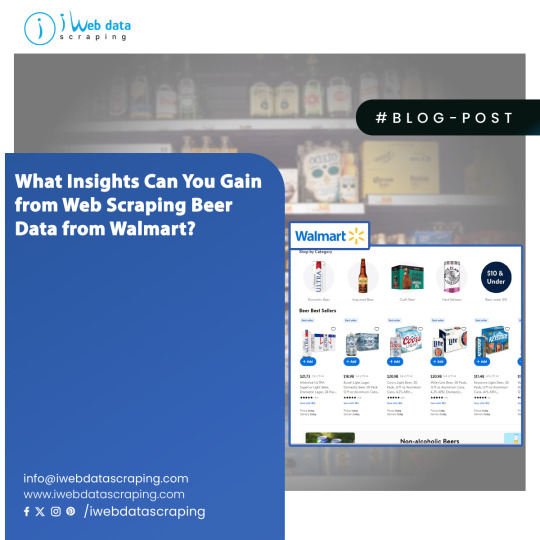
Leverage web scraping beer data from Walmart to gain insights on pricing, availability, trends, and regional preferences for strategic decisions.
Source: https://www.iwebdatascraping.com/uncover-trends-and-insights-by-web-scraping-beer-data-from-walmart.php
#WebScrapingBeerDataFromWalmart#ScrapeWalmartProductDetails#ExtractWalmartProductDataAndReviews#AlcoholPriceDataScrapingServices#AlcoholAndLiquorStoreLocationDataScraping
0 notes
Text
Scrape Wine Industry Trends Data 2025 for Trends
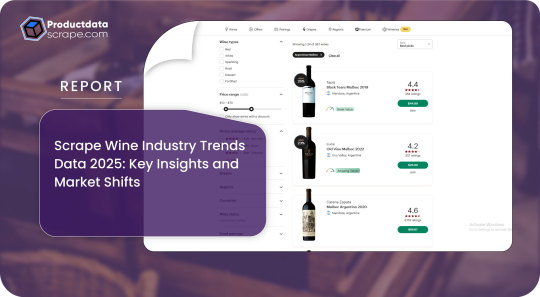
Introduction
The global wine industry in 2025 is undergoing significant transformation, driven by changing consumer preferences, technological innovation, and environmental challenges. This report provides an in-depth analysis of the key trends shaping the wine market from 2021 to 2025, leveraging industry reports, market analyses, and consumer behavior studies. It explores how sustainability, premiumization, e-commerce, alternative packaging, and the rise of low/no-alcohol wines are reshaping the market. Scrape Wine Industry Trends Data 2025 reveals how these factors influence consumer choices and industry strategies. With a focus on market dynamics, the report also looks at the growing importance of online platforms. Extract Wine Market Insights for 2025 underscores the shift towards digital channels as consumer buying behavior evolves. A detailed methodology explains the approach to Scrape Online Wine Marketplace Data 2025, offering a comprehensive view of the wine industry's trajectory.
Methodology
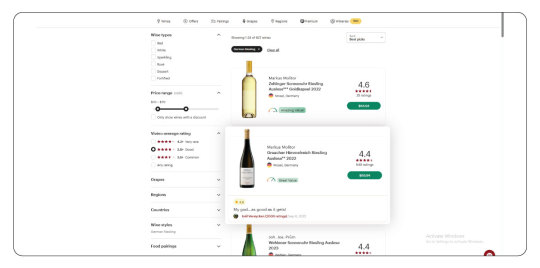
This research uses a mixed-methods approach to gather and analyze data on wine industry trends 2025, with a retrospective review of 2021–2024. Data was sourced from respected industry publications, including reports from IWSR, Silicon Valley Bank (SVB), Grand View Research, and Straits Research, supplemented by insights from trade journals like SevenFifty Daily and The Drinks Business. Wine Market Data Scraping Services 2025 was not used; publicly available reports and articles were manually curated to ensure accuracy and relevance. Quantitative data, such as market size, growth rates, and consumption statistics, were cross-verified across multiple sources to ensure reliability. Qualitative insights, including consumer preferences and technological innovations, were derived from expert interviews and industry forecasts cited in the sources. Trends were identified by analyzing recurring themes and statistically significant shifts in market dynamics over the five years. The analysis prioritizes global and U.S. markets but includes regional insights from Europe and Asia-Pacific where relevant. Extract 2025 Wine Industry Trends Data to highlight key market drivers and emerging trends for the future.
Key Trends in the Wine Industry (2021–2025)
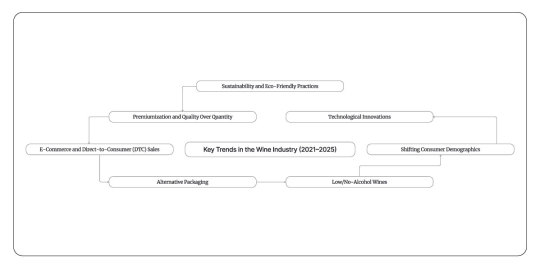
The wine industry has undergone significant changes over the past five years, influenced by economic, environmental, and cultural factors. Below is a detailed examination of the dominant trends, followed by a table summarizing their evolution.
1. Sustainability and Eco-Friendly Practices: Sustainability has transitioned from a niche concern to a core industry requirement. By 2025, wineries are adopting organic, biodynamic, and regenerative farming to address climate change and meet consumer demand for eco-conscious products. Certifications like organic and Fair Trade are increasingly prominent, with the organic wine market projected to reach USD 49.5 billion by 2025 at a CAGR of 9.2%. Climate challenges, such as rising temperatures and unpredictable weather, have pushed producers to share transparent sustainability practices, particularly with younger consumers who prioritize environmental responsibility. Liquor Data Scraping Services can help track these sustainable trends and certifications across wineries.
2. Premiumization and Quality Over Quantity: Consumers are embracing a "less but better" philosophy, favoring premium and super-premium wines over lower-priced options. Global sales of value-tier wines dropped 27% between 2021 and 2023, while premium-and-above tiers are expected to grow through 2027. This shift is driven by younger, higher-spending consumers seeking unique, high-quality wines with compelling stories or sustainable credentials. The trend is powerful in emerging markets like China and India, where rising disposable incomes fuel demand for luxury wines. Alcohol Price Data Scraping Services can provide valuable insights into the pricing trends for premium wines across global markets.
3. E-Commerce and Direct-to-Consumer (DTC) Sales: The pandemic accelerated the shift to online wine sales, a trend that continues to reshape distribution. By 2025, e-commerce and DTC channels will account for a significant share of sales, with 47 U.S. states permitting winery DTC shipping. Digital platforms offer convenience and personalization, with subscription services and curated wine clubs gaining traction. This shift has empowered smaller producers to bypass traditional distributors, fostering direct consumer relationships. Extract Liquor Data from online platforms to identify emerging e-commerce trends and opportunities.
4. Alternative Packaging: Innovations in packaging, such as cans and boxed wines, have gained momentum due to their convenience, sustainability, and appeal to younger demographics. The U.S. canned wine market surged 125% from 2020 to 2021 and continues to grow, with brands like The Uncommon (UK) and Babe (U.S.) leading the charge. These formats reduce waste and align with outdoor and casual drinking occasions, challenging the dominance of traditional glass bottles. Web Scraping Liquor Price Data can help track the cost trends of these alternative packaging formats, offering valuable pricing insights for businesses.
5. Low/No-Alcohol Wines: Health-conscious consumers, particularly Gen Z and Millennials, are driving demand for low- and no-alcohol wines. This segment grew 25% annually from 2015 to 2020 and is expected to expand significantly by 2025. Advances in fermentation technology have improved the taste and complexity of these wines, making them viable alternatives to traditional options. The trend aligns with broader wellness movements and "tempo drinking," where consumers alternate between alcoholic and non-alcoholic beverages. Web Scraping Alcohol & Liquor Data can assist in identifying growth patterns within this segment.
6. Shifting Consumer Demographics: The wine consumer base is aging and diversifying. While Baby Boomers, historically the core wine-drinking demographic, are reducing consumption, younger generations (Millennials and Gen Z) are not adopting wine at the same rate. In 2021, Millennials accounted for 36% of U.S. wine consumers, but Gen Z's alcohol spending dropped 15% in January 2025. Wineries target consumers aged 30–45 with occasion-based marketing and innovative offerings like sparkling spritzers and rosé blends to capture this elusive demographic. The Alcohol & Liquor Data Prices Dataset can help businesses identify price points and consumer preferences in this shifting market.
7. Technological Innovations: Technology is revolutionizing production and consumer engagement. AI-powered vineyard management, blockchain for authentication, and robotic harvesting enhance efficiency and transparency. In 2025, these tools will be mainstream, with wineries using AI to monitor vine health and predict harvests, while blockchain ensures provenance for premium wines. Virtual tasting platforms and augmented reality (AR) experiences also enhance consumer engagement, particularly in emerging markets. Web Scraping Liquor Price Data can help track technological advancements in pricing and product offerings across different platforms.
Trends Summary Table (2021–2025)
YearKey TrendsMarket Impact2021Post-COVID recovery, surge in e-commerce, rise of rosé and sparkling wines, early sustainability focusGlobal wine exports hit record 111.6M hectoliters; online sales grew as on-premise sales dropped 30%2022Premiumization gains traction, canned wine market grows, low/no-alcohol wines emergePremium wine sales outpace value-tier; canned wine up 125% in U.S. from 20202023Sustainability becomes mainstream, DTC channels expand, Gen Z shows moderation trendsOrganic wine market grows at 9.2% CAGR; 47 U.S. states allow winery DTC2024Technology adoption accelerates (AI, blockchain), white wine popularity rises, consumer base diversifiesAI and robotics streamline production; Chenin Blanc gains traction globally2025Low/no-alcohol wines surge, alternative packaging dominates, focus on 30–45 age groupPremium-and-above tiers drive growth; low-ABV wines expand significantly
How Trends Are Revolutionizing the Wine Industry?
The above trends fundamentally reshape the wine industry by aligning it with modern consumer values and technological capabilities. Sustainability is no longer a differentiator but a baseline expectation, forcing wineries to invest in eco-friendly practices or risk losing market share. This shift has spurred innovation in viticulture, with producers adopting climate-resilient grape varieties and regenerative farming to mitigate environmental challenges. For example, regions like Spain’s Sierra de Gredos and New Zealand’s Otago are gaining prominence for their fresh, balanced wines from cooler terroirs, reflecting a move away from overheated traditional regions.
Premiumization is redefining market dynamics, with consumers prioritizing quality and authenticity. This has elevated smaller, artisanal producers who can offer unique, sustainably produced wines, challenging the dominance of large conglomerates. The focus on premium wines also supports higher margins, enabling wineries to invest in innovation and marketing tailored to younger, adventurous consumers.
E-commerce and DTC sales have democratized access to wine, empowering boutique wineries to reach global audiences without relying on traditional distributors. This shift has fostered direct consumer relationships, enabling personalized marketing and data-driven insights into preferences. For instance, AI-driven recommendations and virtual tastings enhance engagement among tech-savvy Millennials and Gen Z.
Alternative packaging is revolutionizing consumption patterns by making wine more accessible and sustainable. Cans and boxes cater to casual, on-the-go occasions, appealing to younger consumers who view wine as a versatile beverage rather than a formal luxury. This trend is reducing the industry’s environmental footprint and challenging the cultural dominance of glass bottles.
The rise of low/no-alcohol wines reflects a broader wellness movement, positioning wine as a health-conscious choice. Producers are attracting moderation-focused consumers by improving taste profiles without cannibalizing traditional sales. This innovation is critical for engaging Gen Z, prioritizing health and sustainability over traditional drinking culture.
Finally, technological advancements are enhancing efficiency and transparency across the supply chain. AI and robotics optimize production, reducing costs and improving quality, while blockchain ensures authenticity for premium wines. These tools are critical for meeting consumer demands for transparency and traceability, particularly in high-value markets.
Conclusion
The wine industry in 2025 is at a pivotal juncture, with trends from 2021 to 2025 driving a shift toward sustainability, premiumization, and technological integration. E-commerce, alternative packaging, and low/no-alcohol wines are expanding the market’s reach, while a diversifying consumer base challenges producers to innovate. These trends are revolutionizing the industry by aligning it with modern health, convenience, and environmental responsibility values, ensuring its resilience in a competitive landscape. Continued adaptation to these dynamics will be essential for wineries to thrive in the coming decade.
At Product Data Scrape, we strongly emphasize ethical practices across all our services, including Competitor Price Monitoring and Mobile App Data Scraping. Our commitment to transparency and integrity is at the heart of everything we do. With a global presence and a focus on personalized solutions, we aim to exceed client expectations and drive success in data analytics. Our dedication to ethical principles ensures that our operations are both responsible and effective.
Source>>>https://www.productdatascrape.com/scrape-wine-industry-trends-data-insights.php
#ScrapeWineIndustryTrendsData#WineMarketDataScrapingServices#LiquorDataScrapingServices#AlcoholPriceDataScrapingServices#WebScrapingAlcoholAndLiquorData
0 notes
Text

Scrape Wine Industry Trends Data 2025 to uncover emerging market shifts, consumer preferences, and key innovations.
Read More>>>https://www.productdatascrape.com/scrape-wine-industry-trends-data-insights.php
#ScrapeWineIndustryTrendsData#WineMarketDataScrapingServices#LiquorDataScrapingServices#AlcoholPriceDataScrapingServices#WebScrapingAlcoholAndLiquorData
0 notes
Text
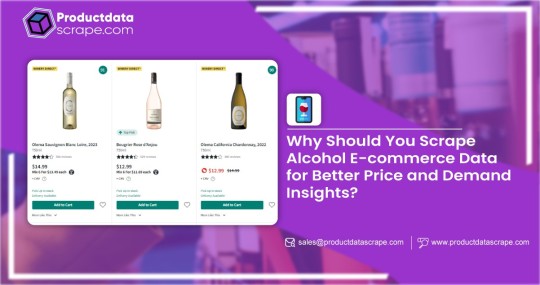
Scrape Alcohol E-commerce Data for Better Price Insights
#ScrapeAlcoholEcommerceDataForBetterPrice#ExtractEcommercePricingAndDemandInsights#TrackingAlcoholMarketTrendsWithDataScraping#WebScrapingAlcoholAndLiquorData#AlcoholPriceDataScrapingServices#ScrapingAlcoholEcommerceDataInRealTime
0 notes
Text
Scrape Alcohol E-commerce Data for Better Price Insights
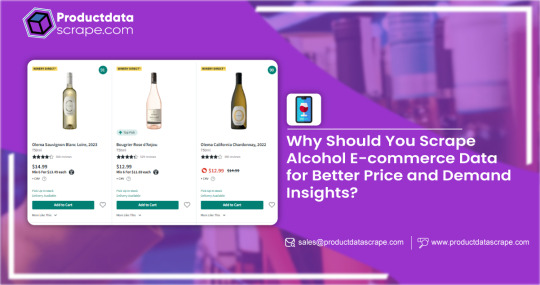
Introduction
The alcohol e-commerce industry has been experiencing significant growth over the past few years, driven by changing consumer behavior, the convenience of online shopping, and the increased demand for direct-to-consumer alcohol delivery services. As the landscape of the alcohol industry evolves, businesses and analysts are focusing on data-driven insights to stay competitive.
One of the most crucial data points for businesses operating in the alcohol sector is price and demand analysis. Scrape Alcohol E-commerce Data for Price & Demand Analysis to better understand the market dynamics, customer preferences, and pricing strategies to make informed decisions.
Data scraping, or web scraping, is extracting valuable data from websites using automated tools. In the context of alcohol e-commerce, this involves gathering product information, pricing, customer reviews, and demand patterns from online retailers and marketplaces. By collecting this data, businesses can gain actionable insights into trends and opportunities within the alcohol industry. Extract Alcohol E-commerce Pricing & Demand Insights to provide a comprehensive market view, enhancing competitive intelligence and operational efficiency.
The Importance of Price & Demand Analysis in the Alcohol Industry

The alcohol industry operates in a highly competitive market, with numerous players offering a wide range of products. Understanding how pricing affects consumer behavior is essential for making strategic pricing decisions, managing inventory, and optimizing sales. Alcohol's price elasticity is an important factor for businesses, as small changes in price can significantly impact demand.
Additionally, demand analysis is critical in identifying which products are in high demand, tracking seasonal trends, and predicting shifts in consumer preferences. With the growing variety of alcoholic beverages and changes in consumer behavior, businesses must monitor demand closely to ensure that they offer the right products at the right price points. Tracking alcohol market trends with data scraping allows businesses to better understand the evolving market and stay ahead of competitors.
Incorporating data analytics into price and demand analysis allows alcohol businesses to:
Optimize Pricing Strategies: Businesses can adjust their prices to remain competitive while maximizing profit by analyzing competitors' prices and demand fluctuations. Web Scraping Alcohol & Liquor Data can provide valuable insights into competitors' pricing models, helping identify the best product pricing strategies.
Understand Demand Trends: Data scraping helps businesses track shifts in demand for specific products, regions, or seasons, allowing them to forecast sales better. Alcohol and Liquor Datasets offer a comprehensive view of consumer preferences and market dynamics, assisting businesses in making data-driven decisions.
Enhance Inventory Management: By understanding demand patterns, businesses can align their inventory with expected customer preferences, avoiding overstocking or understocking.
Improve Customer Targeting: Price and demand analysis insights allow businesses to tailor their offerings and marketing efforts to specific customer segments.
The Role of Data Scraping in Price & Demand Analysis

Data scraping is crucial in price and demand analysis, as it extracts real-time market data. It helps businesses track pricing trends, monitor competitor strategies, and analyze consumer behavior, providing valuable insights to optimize pricing, inventory, and demand forecasting.
Scraping alcohol e-commerce data is a crucial component of price and demand analysis. Automated scraping tools can quickly extract vast data from websites, providing businesses real-time information on prices, product availability, customer reviews, and sales trends. By leveraging this data, businesses can identify pricing gaps, understand customer sentiment, and adjust their strategies to stay competitive. Liquor Data Scraping Services can assist businesses in gathering the necessary insights to make data-driven decisions and remain at the forefront of the market.
Price Scraping: Scraping prices from multiple online retailers allows businesses to compare their pricing with competitors in real-time. This helps businesses identify whether their prices are competitive or need adjustment. Price scraping can also reveal patterns in pricing strategies, such as discounts, bundling, and promotional pricing. Alcohol Price Data Scraping Services ensure that businesses are always equipped with the most current pricing information to refine their pricing strategies effectively.
Demand Analysis: Data scraping can be used to track the availability of alcohol products on various e-commerce platforms, providing insights into the popularity of different brands, varieties, and packaging options. Businesses can gain a better understanding of product demand by analyzing the frequency of product restocks, out-of-stock items, and customer reviews.
Customer Sentiment: Scraping customer reviews and ratings can help businesses assess customer satisfaction and identify preference trends. Negative reviews may indicate areas of improvement, while positive reviews can highlight products that resonate well with customers.
Key Benefits of Scraping Alcohol E-commerce Data

Scraping alcohol e-commerce data offers key benefits such as tracking pricing trends, monitoring competitor strategies, analyzing consumer preferences, optimizing inventory management, and identifying popular products. This data helps businesses improve marketing strategies, enhance customer experiences, and increase profitability.
Competitive Intelligence: In a crowded market like alcohol e-commerce, knowing how your competitors are pricing their products is vital. Data scraping provides valuable insights into competitors' pricing strategies, promotional tactics, and product offerings. Businesses can adjust their pricing and product positioning to stay competitive by analyzing this data.
Real-Time Pricing Information: Price fluctuations are common in the alcohol industry, especially with discounts, seasonal promotions, and dynamic pricing. Scraping alcohol e-commerce data in real time ensures that businesses have up-to-date pricing information to adjust quickly to market changes. This enables businesses to optimize their pricing strategies and maintain a competitive edge.
Trend Identification: Analyzing scraped data over time allows businesses to identify emerging trends in the alcohol industry. For example, specific categories, such as craft beers, organic wines, or low-alcohol beverages, may experience surges in demand. Data scraping can help businesses spot these trends early, allowing them to adjust their product offerings and marketing strategies accordingly.
Product Performance Insights: By scraping data on customer reviews, ratings, and sales volume, businesses can gain insights into how their products are performing. Products that consistently receive high ratings and positive feedback are likely in high demand, while those with poor reviews may need rebranding or improvements. Monitoring product performance allows businesses to make data-driven decisions about which products to push, discontinue, or improve.
Inventory Management Optimization: Businesses can optimize their inventory management with insights into demand patterns. Scraping data on product availability and restocking frequency across multiple platforms helps businesses forecast demand and plan their stock levels accordingly. This ensures that popular products are always in stock and reduces the risk of overstocking items less in demand.
Improved Marketing Strategies: Understanding pricing and demand trends helps businesses refine their marketing strategies. For instance, if a specific type of wine is gaining traction, a retailer might focus on promoting that product through targeted ads or discounts. Additionally, insights into pricing strategies can help businesses decide when to run promotions, bundle products, or offer loyalty rewards.
Ethical Considerations and Legal Implications
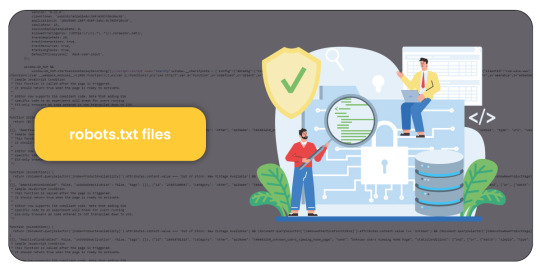
While scraping alcohol e-commerce data offers significant benefits, businesses must consider ethical and legal implications. Web scraping can be a legally gray area, as websites often have service terms prohibiting automated data extraction. Companies must comply with relevant laws, including data privacy regulations and intellectual property rights.
Websites may sometimes have measures to detect and block scraping activities. Businesses should use ethical scraping techniques, such as respecting robots.txt files and avoiding overloading websites with excessive requests. Additionally, businesses should be aware of the potential for data misuse and ensure that the information they collect is used responsibly.
How Product Data Scrape Can Help You?
Comprehensive Product Data Extraction: We extract detailed product information such as prices, descriptions, and availability from multiple alcohol e-commerce platforms to help businesses track trends and adjust strategies accordingly.
Competitive Analysis: By scraping competitor pricing, promotions, and product assortments, we provide valuable insights to help businesses stay ahead in the competitive alcohol market.
Consumer Behavior Insights: We gather data on customer reviews, ratings, and purchase patterns to help businesses understand consumer preferences and tailor their offerings.
Market Trends Monitoring: We continuously monitor alcohol e-commerce platforms for changes in market trends, helping businesses identify emerging products and adjust their inventory accordingly.
Custom Data Reports: We offer customized data scraping solutions, delivering reports and dashboards that align with your specific business needs and enhance decision-making and operational efficiency.
Conclusion
Scraping alcohol e-commerce data for price and demand analysis provides valuable insights to drive better decision-making, improve competitiveness, and optimize business operations. By collecting data on pricing, product availability, customer sentiment, and market trends, alcohol businesses can gain a comprehensive understanding of the market landscape. This enables them to adjust their pricing strategies, manage inventory more effectively, and respond to changes in customer preferences.
As the alcohol e-commerce industry grows, businesses that leverage data scraping to monitor and analyze price and demand trends will be well-positioned to succeed in a highly competitive market. By focusing on ethical and legal scraping practices, businesses can gather and use data responsibly, ultimately enhancing their operational efficiency and customer satisfaction.
At Product Data Scrape, we strongly emphasize ethical practices across all our services, including Competitor Price Monitoring and Mobile App Data Scraping. Our commitment to transparency and integrity is at the heart of everything we do. With a global presence and a focus on personalized solutions, we aim to exceed client expectations and drive success in data analytics. Our dedication to ethical principles ensures that our operations are both responsible and effective. Read More>> https://www.productdatascrape.com/scrape-alcohol-data-price-demand-insights.php
#ScrapeAlcoholEcommerceDataForBetterPrice#ExtractEcommercePricingAndDemandInsights#TrackingAlcoholMarketTrendsWithDataScraping#WebScrapingAlcoholAndLiquorData#AlcoholPriceDataScrapingServices#ScrapingAlcoholEcommerceDataInRealTime
0 notes
Text
Scrape Alcohol E-commerce Data for Better Price Insights
#ScrapeAlcoholEcommerceDataForBetterPrice#ExtractEcommercePricingAndDemandInsights#TrackingAlcoholMarketTrendsWithDataScraping#WebScrapingAlcoholAndLiquorData#AlcoholPriceDataScrapingServices#ScrapingAlcoholEcommerceDataInRealTime
0 notes